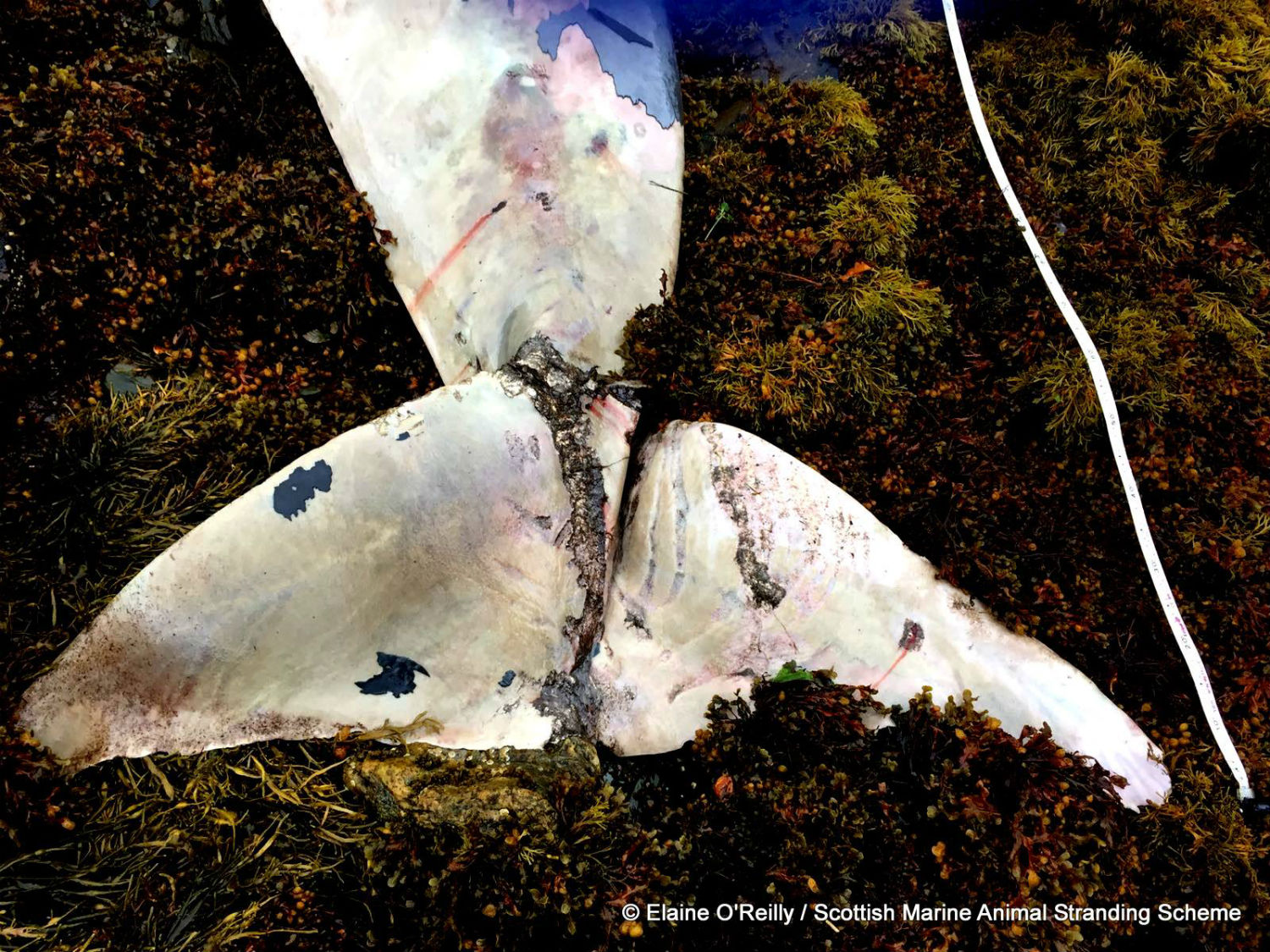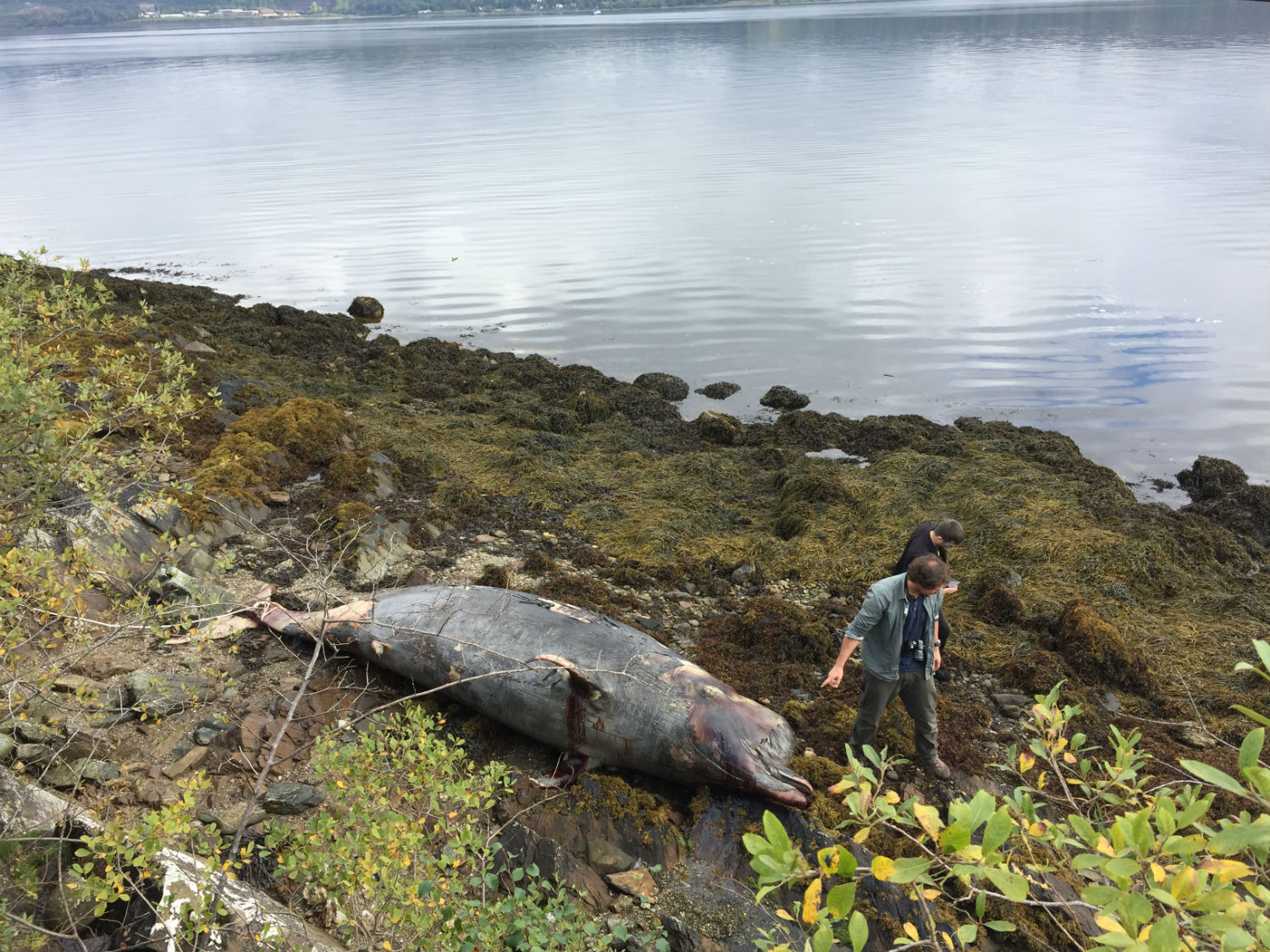WARNING: Graphic Images
A WHALE died off the coast of Scotland as a result of getting snarled by a rope – the first tragedy of its kind in a quarter of a century.
The 6.6m (22ft) Northern Bottlenose whale had cuts caused by rope and may have drowned before it was washed up at Ardentinny, Argyll and Bute last weekend.
The whale was examined by the Scottish Marine Stranding Scheme (SMASS), who said it was first time since 1992 they had found any species of beaked whale killed by “entanglement”.
Graphic pictures of the autopsy carried out by the SMASS team clearly show deep wounds caused by the rope around the flukes and tailstock.
Excess water, probably seawater, was also found in the young male’s stomach, supporting the theory that it may have drowned after getting trapped.
The death comes amid growing concern about the threat posed to all marine species by nets, ropes, plastic and other detritus in the planet’s seas.

Sharing images of the findings, SMASS said: “Entanglement is known to be a global problem particularly for large whales.
“Nevertheless this is the first Northern Bottlenose whale, or indeed any beaked whale species, where we have diagnosed entanglement as the cause of death since the start of the scheme in 1992.
“By examining cases such as this, we are however able to better understand how and where animals become entangled, hopefully leading to the development of pragmatic mitigation measures to minimize the problem in the future.”
The report added that the whale was in “a moderate-good nutritional condition” and had recently been feeding successfully.
“The tailstock exhibited significant damage characterised by an encircling lesion over the tailstock and linear abrasions on the ventral surface of the fluke, which is consistent with entanglement in rope,” added the report.
“There was a significant amount of fluid present in the stomach, most likely sea water.
“The lesions on the tail and excess amount of fluid in the stomach in an animal that appeared healthy otherwise, are all findings that support a diagnosis of acute fatal entanglement.”

In June 2017, SMASS recovered four kilos of plastic bags from the stomach of a Cuvier beaked whale which was found stranded on Skye.
The month before this, the organisation was also involved in work that revealed how one of the UK’s last killer whales was contaminated with a “shocking” level of toxic chemicals.
The animal, called Lulu, was found dead on the Isle of Tiree in the Inner Hebrides last year after becoming entangled in fishing lines.
The northern bottlenose whale is a beaked whale that has a very distinctive bulbous melon, or forehead, and a dolphin-like beak.

Northern bottlenose whales are deep-water specialists found in the North Atlantic Ocean and occur in small numbers off the Northern Isles and Western Isles of Scotland, and off the west coast of Ireland.
Populations were depleted by commercial whaling, particularly during the 20th Century.
Current threats include toxic pollutants, entanglement in fishing nets and marine litter, and noise disturbance, which interferes with their use of sound.
Bottlenose whales, part of the “beaked whale” family, are unique creatures that appear to be relatively rare worldwide.

